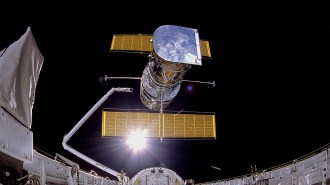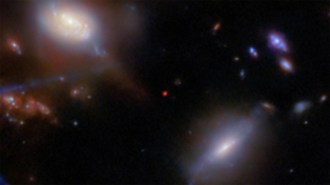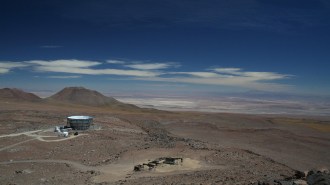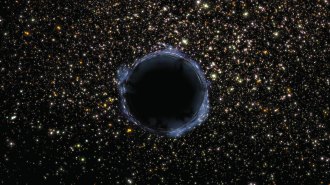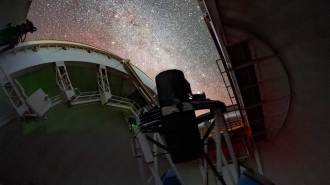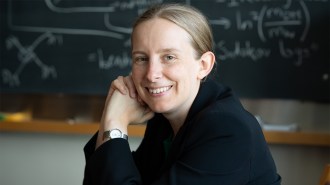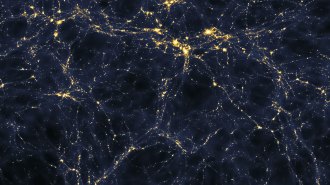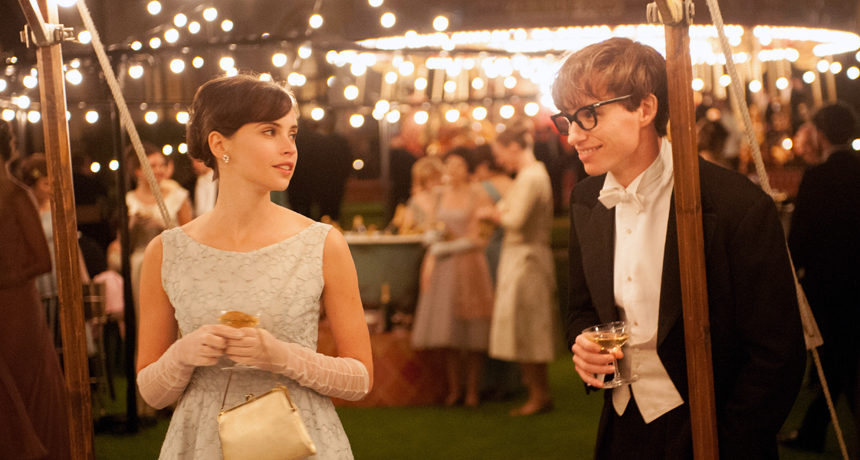
LOVE AND SCIENCE The challenging but rewarding relationship between Stephen (Eddie Redmayne) and Jane (Felicity Jones) Hawking plays a central role in The Theory of Everything.
Liam Daniel/Focus Features
When Stephen Hawking (played by Eddie Redmayne) first tries out his now-iconic computerized voice, his wife Jane (Felicity Jones) is aghast: “It’s American!” she says. That line draws a laugh, but it also highlights a pivotal draw of The Theory of Everything: That American-accented robotic voice is one of the few things most people know about this brilliant, complicated — and British — man.
“Very little is understood about [Hawking] in America or Canada,” says Anthony McCarten, the film’s screenwriter. “Nine of 10 people think he’s American. Most people think he was born disabled. They don’t know he was married and has three kids. There’s a lot of news to break with this film.”
The movie, based on the 2007 memoir by Jane Hawking, starts in 1963, when Hawking is an able-bodied, intelligent and exceedingly lazy physics graduate student at the University of Cambridge. Just as he appears to be hitting his stride — he falls in love and begins developing insights into black holes and the origin of the universe — he is diagnosed with motor neuron disease (the British term for amyotrophic lateral sclerosis, or ALS) and told he has two years to live. (Nearly 50 years after his predicted expiration date, Hawking is still going strong.)
The rest of the movie shows that as Hawking rose to fame, thanks largely to his book A Brief History of Time, he and Jane were battling through a tumultuous 25-year marriage. The film impressively avoids sensationalizing the deterioration of the Hawkings’ relationship, which ends with Stephen marrying the nurse Jane hired for him and Jane marrying a choir director who helped take care of Stephen.
McCarten and director James Marsh get creative trying to incorporate Hawking’s contributions to science: Cream swirling around a coffee cup illustrates the region around a black hole, while Jane Hawking uses a pea and a potato to explain the difference between quantum theory and general relativity. But for the most part, science takes a backseat to a story about love and, as Marsh puts it, “a battle against impossible odds to have a meaningful life.”
McCarten says Hawking was hesitant about the movie at first — “What man really wants his story told by his ex-wife?” McCarten asks — but warmed up to it after reading the script. He visited the set a few times and offered his robotic voice for use in the film.
A tear ran down Hawking’s face after he saw the completed film for the first time, McCarten says. Then, twitching his cheek to scroll through letters on his computer, Hawking composed two words: “Broadly true.”
“That’s a ringing endorsement,” McCarten says. “I’ll take that any day.”
